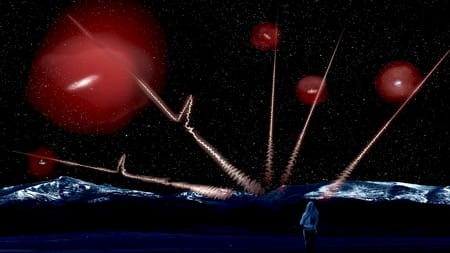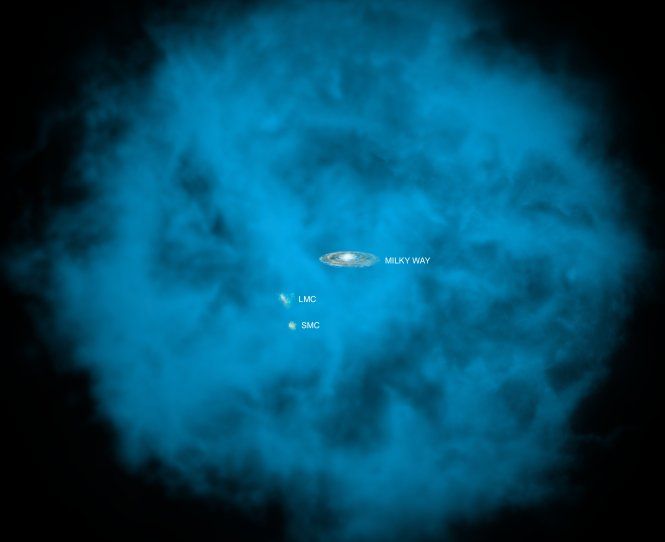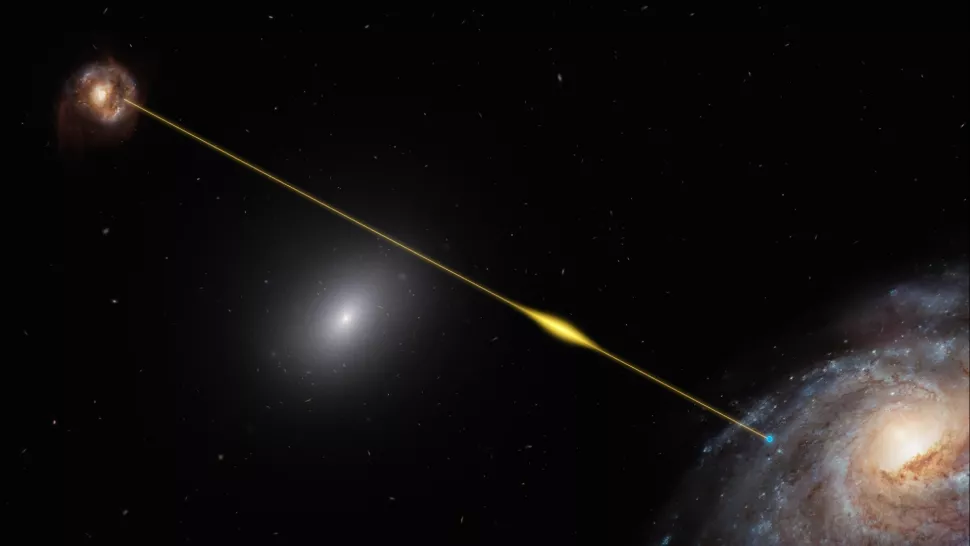Fast radio bursts, or FRBs, are radio wave pulses that often come from a distance of millions to billions of light-years (radio waves are electromagnetic radiation like the light we see with our eyes but have longer wavelengths and frequencies). Since the initial FRB was detected in 2007, numerous additional ones have also been located.
A large FRB that erupted in the Milky Way galaxy in 2020 was discovered by Canada’s CHIME experiment and Caltech’s STARE2 instrument (Survey for Transient Astronomical Radio Emission 2).
These earlier findings supported the hypothesis that magnetars, or dead, magnetized stars, are the most likely source of the explosive occurrences.
What Are The Researchers Trying To Observe?
Researchers are now wondering how FRBs may be utilized to investigate the gas between us and the bursts as more and more of them come in. They want to specifically investigate the diffuse gas haloes that surround galaxies using FRBs.
The gas engulfing the galaxies is anticipated to slow the waves down and spread the radio frequencies as they approach Earth. The new study examined a sample of 474 far-off FRBs found by CHIME, which has found the most FRBs to date. It demonstrated that the subset of 20 FRBs that passed through galactic haloes were indeed slowed down more than non-intersecting FRBs.
How Does The FRB’s Behave?

According to study co-author and assistant professor of astronomy Vikram Ravi, “our analysis demonstrates that FRBs can behave as skewers of all the matter between our radio telescopes and the source of the radio waves.” Liam Connor is the study’s principal author.
The material in the halos of galaxies close to the Milky Way has been measured using fast radio bursts, according to Connor.
What Are Some Other Observations?
The study also claims to discover more matter than anticipated in the region of galaxies, notably twice as much gas as anticipated by theoretical models.
All galaxies are encircled and fueled by enormous gas pools from which they were formed. The gas is quite thin and difficult to see, though. “These vast stores of gas are immense. The circular halo surrounding the nearby Andromeda galaxy would appear 1,000 times larger than the moon if it were visible to the human eye “Connor declares.

The Different Methods Devised By Reservers To Observe The Halos
Different methods have been devised by researchers to investigate the concealed halos. For instance, physics professor Christopher Martin from Caltech and his group created the Keck Cosmic Webb Imager (KCWI), a device at the W. M. Keck Observatory that can examine the filaments of gas that stream into galaxies from the halos.
By measuring the total amount of material in the halos using the new FRB technique, astronomers can better understand how galaxies expand and change throughout cosmic time.
This is only the beginning, says Ravi. Our methods can be used to analyze individual haloes of various sizes and habitats as we find more FRBs, helping us to solve the riddle of how matter is spread throughout the universe.
How Would These FRBs Help The Researchers?
The FRB findings are anticipated to keep coming in the future. The 110-dish Deep Synoptic Array (DSA-110) at Caltech has already located the host galaxies of a number of FRBs.
The Owen Valley Radio Observatory at Caltech, which is close to Bishop, California, is the site of this NSF-funded experiment. A larger array, the DSA-2000, with 2,000 dishes and the most potent radio observatory ever constructed, will be constructed by Caltech scientists in the upcoming years.
The DSA-2000 will be able to detect and pinpoint the origin of thousands of FRBs annually thanks to financing from Schmidt Futures and the NSF. The halo gas’s observed effects on rapid radio bursts are discussed in the Nature Astronomy article.
